Iran is one of the most magnificent civilizations of middle east. Today it is famous for art, architecture, and poetry. In many ways, the reality is better than the image because Iran is one of the few countries where you can dive into an ancient culture and experience a lifestyle that has now disappeared from most of the modern world. What is less-known is that visitors can see archaeological and cultural sites spanning over 10,000 years. to help you plan your trip, here is a list of Iran’s top 10 places to visit that you should see while you are there:
1
Imam Square, Isfahan
Isfahan (Esfahan) contains some of the world’s most beautiful Islamic monuments. Imam Square, formerly known as Naqhsh-e jahan square is one on the top 10 places to visit in Iran. It was the symbolic center of the Safavid Empire when some of the most stunning Islamic architecture in the world were created. This huge rectangular square measuring 160 x 512 m, is the second largest in the world. Framed by turquoise domed mosques, a palace perched on plane tree columns and a covered bazaar; it stands out as one of the most spectacular architectural complexes in Iran. In the background, the domes, minarets, the sensitive bustle of the bazaar whose mazes leave north of the square: everything contributes to evoke the most beautiful mirages of the East.
Throughout the history, the square has been used for performing all kinds of national and governmental festivals and ceremonies as well as polo game. The stone goal posts still exist in north and south ends of Naqsh-e Jahan Square.
The square is surrounded by arcaded structures two stories high containing The grand bazaar of Isfahan which is one of the oldest and largest covered bazaars in the Middle East.
Imam square is one of the numerous Unesco world heritage sites of Iran.
Read – Full guide to Naqsh-e Jahan Square
 Imam square, Isfahan
Imam square, Isfahan
2
Persepolis
Persepolis, locally known as Takht-e Jamshid or Parseh is one of the world’s most magnificent archaeological sites Founded by Darius I in 518 B.C. as a ceremonial capital of of the Achaemenid Empire and was in function for more than 200 years until its destruction by Alexander the Great in 330 B.C.
Persepolis was designed primarily to be a showplace and spectacular center for the receptions and festivals of the kings.so Each Spring the representatives from the different nations of the Persian empire gathered at Persepolis to bring tribute to the King of Kings.
The existing remains of the complex consist of gate of all nations, ruins of the palaces with enormous stone columns and capitals representing both powerful and mythical beasts; facades and staircases with fine bas-reliefs and inscriptions, stone door and window jambs; and tombs of Artaxerxes I and Artaxerxes II.
Read – Persepolis Ultimate Guide
 Gate of nations, Persepolis
Gate of nations, Persepolis
3
Bridges in Isfahan
Zayandeh rud, the largest river of the Iranian Plateau crosses Isfahan, so the city boasts some of the most beautiful bridges of the world. Among all the historical bridges over Zayandeh rud River, 3 of them shouldn’t be missed while you visit Isfahan: The 298m-long Si-o-Seh Pol Bridge ( 33 arches bridge) built in 1602 , the two story Khaju bridge which is a fascinating place to enjoy the sunset and Shahrestan Bridge that was originally built around 2000 years ago.
These bridges span the Zayandeh River which separates Isfahan from the suburb of New Julfa. A walk along the Zayandeh River in a late afternoon and crossing the bridges, is one of the most memorable travel experiences while you are in Iran. The bridges were served particularly as a connection between the old city and the bazaar to the city’s vital Armenian neighborhood of New Julfa.
Isfahan historical bridges are ranked among Iran’s top places to visit.
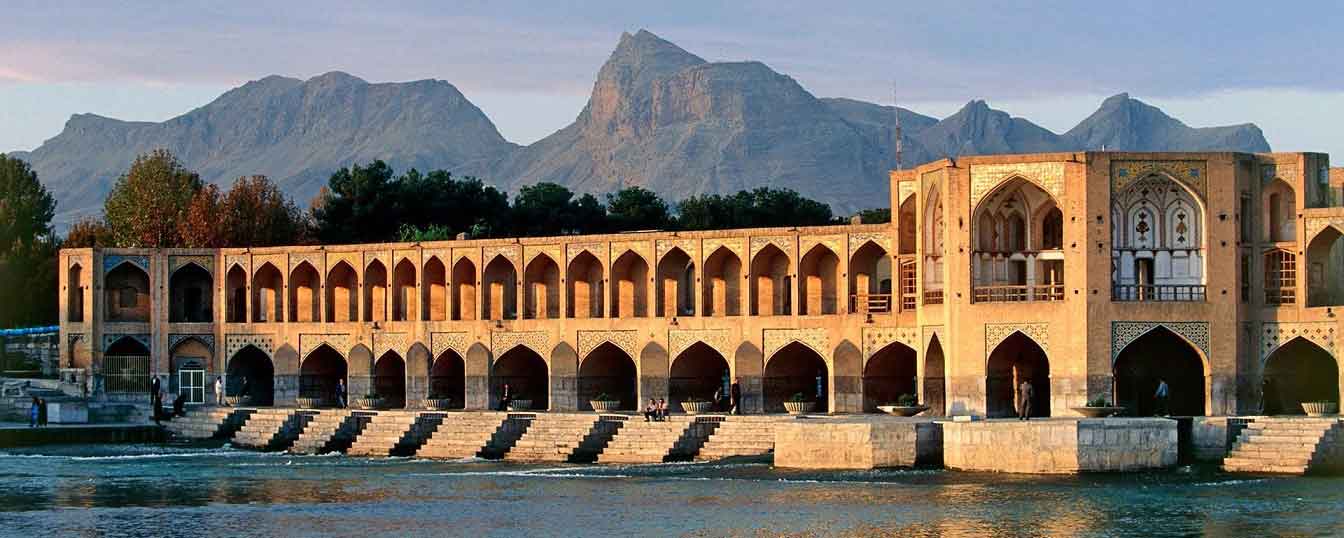 Khaju bridge, Isfahan
Khaju bridge, Isfahan
4
Historic City of Yazd
The historic city of Yazd is recognized as a World Heritage Site by UNESCO Sandwiched between two deserts; this isolated oasis town offers the visitor one of the best examples of traditional Iranian mud brick architecture, and is an undoubted highlight of any visit to Iran.
Yazd has always been an important commercial center on the caravan trail between Western and Eastern Iran and home to a prominent Zoroastrian community.
With its numerous Badgirs (windtowers) rising above a labyrinth of adobe roofs, the historic old city of Yazd is one of the oldest towns on earth. Listed as a Unesco World Heritage site, it encompasses thousands of ancient dwellings, screened from the narrow lanes by imposing mud walls. For the visitor, the old city offers a treasure trove of important sites such as Jame mosque, Alexander prison and lots of hidden water reservoirs, courtyards and teahouses, shops selling crafts and houses converted into atmospheric hotels. That’s why, it is one of Iran’s top places to visit.
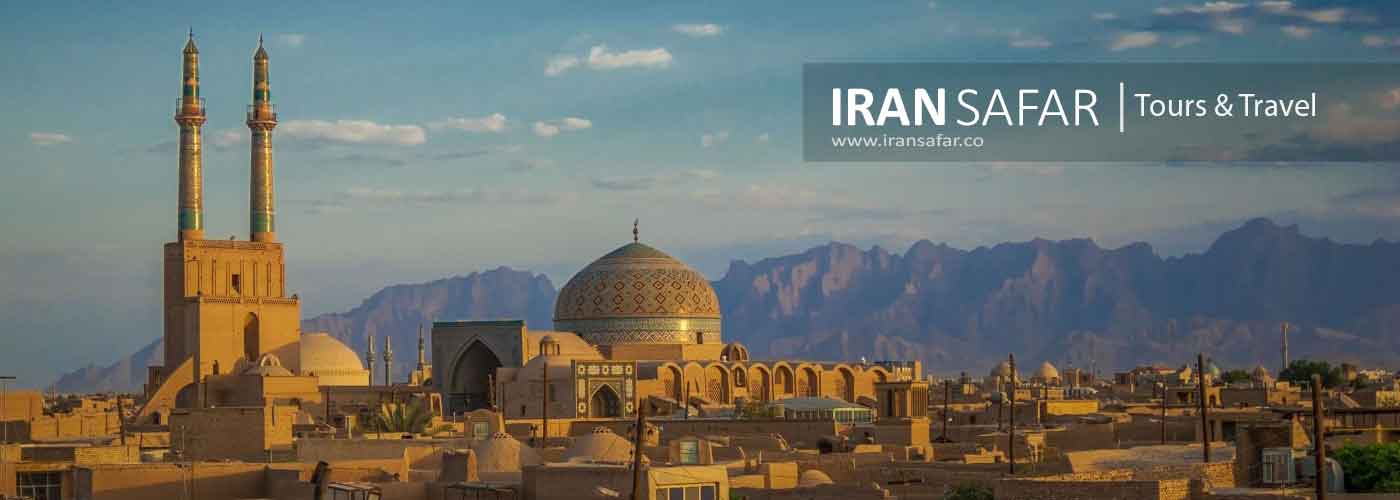 Jame mosque, Yazd
Jame mosque, Yazd
5
Naqash-e-Rostam
Naqash-e-Rostam also known as Iran’s Necropolis, located a few miles from Persepolis, is home to four giant rock-cut tombs in the shape of Greek crosses which were built to house the remains of Darius the Great and three of his successors. The tombs are sometimes known as the Persian crosses, after the shape of the facades of the tombs. The entrance to each tomb is at the center of each cross, which opens to a small chamber, where the king lay in a sarcophagus.
out of these four tombs, the only one with cuneiform inscription is the tomb of Darius the great.
Almost eight centuries later than Naqsh-e Rostam was founded, Sassanian monarchs Ardeshir I and his son Shapur I, commissioned rock panels consecrated to their glory; they revived the Achaemenid principle and had their works executed in prestigious localities. Thus, on the cliff face of Naqsh-e Rustam, at the foot of the grand Achaemenid tomb of Darius, Xerxes, Artazerxes I, and Darius II, Sassanians created Bas-reliefs showing their investiture or triumphal scenes. One of the most important carvings shows the defeated Roman emperor Valerian kneeling before the victorious Shahpur I (reign 241 to 272 A.D).
Read – Full Guide to Naqsh-e Rostam
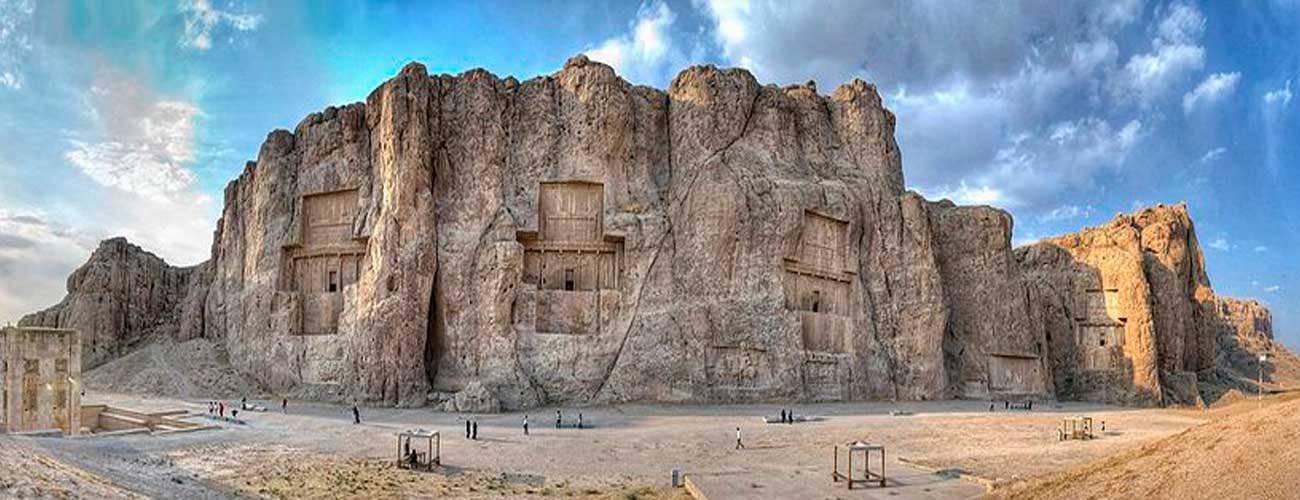 Naghsh-e Rustam
Naghsh-e Rustam
6
Museums of Tehran
Although many visitors try to spend as little time as possible in the crowded capital city, Tehran has a lot to offer. For those who visit Tehran at beginning of their trip, visiting Tehran national museum which consists of a Prehistoric and a Islamic sections can be very useful to know more about history of Iran and its sites that will be visited later .The other highlight of a visit to the Iranian capital is the opportunity to explore several of its other excellent museums which are located in Tehran city center, such as: National Museum of Iran, Abgineh Cermaic & Glass Museum; the Contemperary Art museum, the PersianCarpets museum and the stunning Iran National Jewels Museum which houses one of the most fabulous collections of treasures in the world including some great crowns of Pahlavi Dynasty, the fabulous peacock throne, the famous globe nd lots of other amazing items
In case you have a bit more time do not miss Reza Abbassi Museum whit its great collection of calligraphy, Miniatur Art and ancient archaeological items.
Museums in Tehran are definitely ranked among Iran’s top places to visit and we recommend you to put some of them in your bucket list for your Iran trip!
 Reza Abbassi museum, Tehran
Reza Abbassi museum, Tehran
7
Soltaniyeh Dome
The Soltaniyeh Dome located in Zanjan Province is a complex of ruins centering on the Mausoleum of the Mongol ruler Öljeitü, also known as Sultan Muhammad Khodabandeh. This amazing building, which is definitely one of Iran’s top 10 places to visit, has been described by Professor Arthur Upham Pope as ’one of Persia’s supreme architectural achievements’. The Dome of Soltaniyeh paved the way for more daring Iranian-style dome constructions in the Muslim world, such as the Mausoleum of Khoja Ahmed Yasavi and the Taj Mahal.
The main building was built between 1302 and 1312 AD, when the city was the capital of Iran, and it is known as the oldest double-shell dome in Iran and the largest brick dome of the whole world.
The octagonal building is crowned with a 50 m tall dome covered in turquoise-blue faience and surrounded by eight slender minarets which are in ruin. although Much of its exterior decoration has been lost, but the interior retains superb mosaics, faience, and plaster. The insides of the iwans’ walls possess white inscriptions that stand out against the blue background. The undersides of the iwans are stuccoed with bands of ornamentation that were later painted. The galleries have low, wooden or marble railings. The windows are fitted with bronze screens, along with bronze knobs and balls set with gold and silver. Some elements from these window grilles were inscribed with their patron’s name or with detailed scenes.
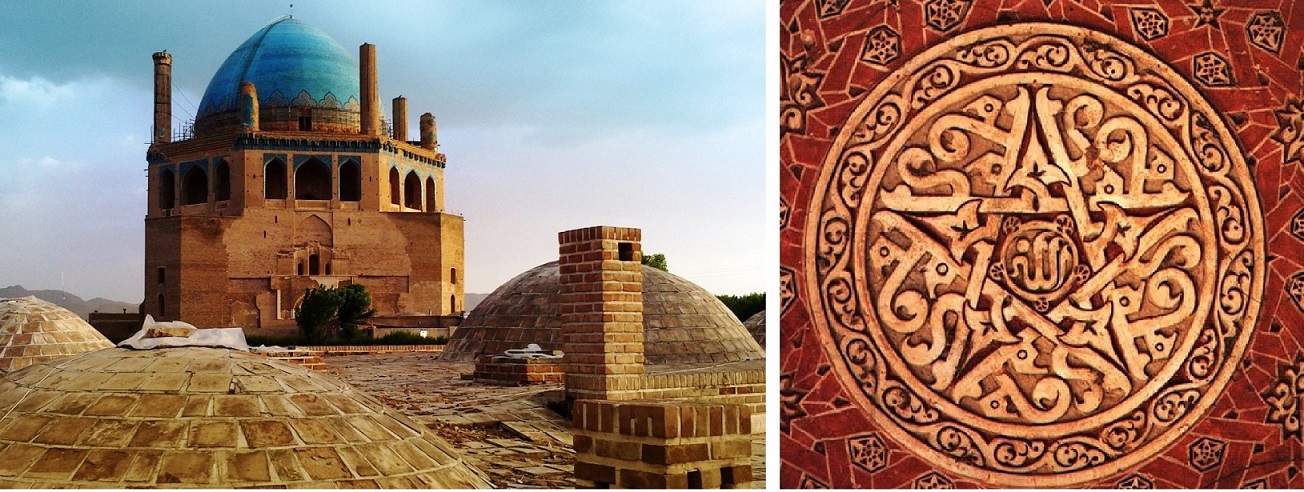 Sultaniyeh dome, Zanjan, Iran’s top ten places to visit
Sultaniyeh dome, Zanjan, Iran’s top ten places to visit
8
Behistun
Behistun or Bisotoun consists of an achaemenide relief and an inscription carved almost 100 meters up a cliff in Kermanshah Province, Western Iran. This fascinating relief tells the story of the victory of the Persian king, Darius the Great (522-486 BCE) over his rebellious satraps when he took the throne of the Achaemenid Empire. in this relief Darius overlooks nine representatives of conquered peoples, their necks tied. A tenth figure, badly damaged, is lying under the king’s feet. Above these figures there is a representation of the supreme god Ahuramazda. This relief is based on older monuments, further along the road, at Sar-e Pol-e Zahab city.
Underneath, there are 3 panels with cuneiform text in Old Persian, Elamites and Babylonian telling the same story and also how Darius was chosen by Ahuramzada as the king of the kings. This old Persian text consists of four columns and an appendix and has a total length of about 515 lines. In 1835, Sir Henry Rawlinson, an officer of the British East India Company army, began to investigate this monument and copied the cuneiform text.
There are some other carvings dating to Parthian empire underneath the main carving. A statue of Hercules and a Safavide caravanserai, recently transformed to a charming hotel, can also been visited while you are at the site.
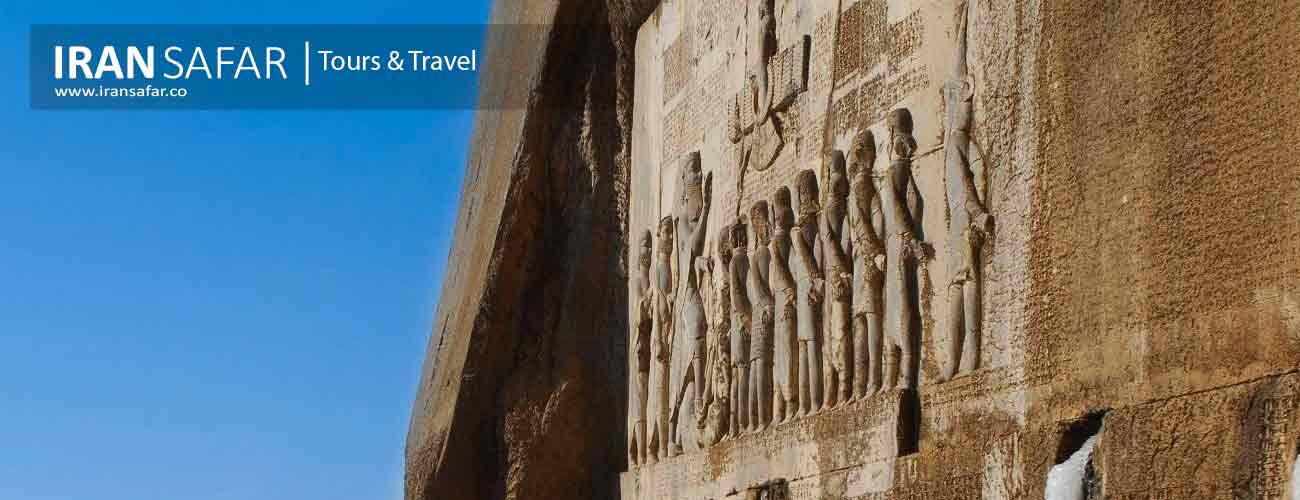 Behistun carvings, Kermanshah
Behistun carvings, Kermanshah
9
Chogha Zanbil Ziggurat
Chogha Zanbil, originally named Dur Untash (town of Untash) was built about 1250 BC by king Untash-Napirisha, and was dedicated to the Elamite god Inshushinak.
The town was devastated by the Assyrian king Ashurbanipal in 640 B.C and abandoned. Today, Chogha Zanbil ziggurat is one of the most complete ziggurats surviving in the world, and its remaining 2.5 levels are undeniably impressive. The whole complex was protected by three concentric walls to define the main areas of the ‘town’. the temple and tomb complex once rose to 53 m over 5 platforms, was the focal point of his city of Dur Untash.
The basic material of the whole ensemble is mud brick some of which have cuneiform characters giving the names of deities in the Elamite and Akkadian languages. although the Ziggurat now stands only 25 m high, less than half of its estimated original height, its state of preservation is unsurpassed. the whole complex consists of the ziggurat and the ruins of some archaeological site of Chogha Zanbil containing other temples, residences, tomb-palaces, and water reservoirs.
The historical monuments of the archaeological site of Chogha Zanbil are authentic in terms of their forms and design, materials and substance, and locations and setting and several conservation measures have been undertaken since the original excavations of the site between 1946 and 1962.
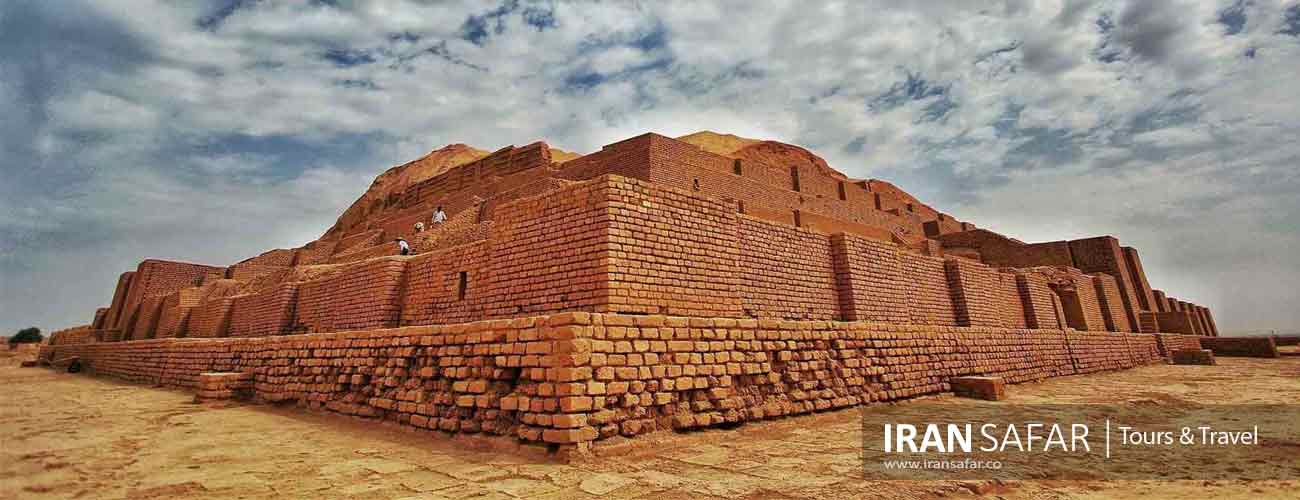
Chogha zanbil, Khuzistan, Iran
10
Takht-e-Soleyman
The UNESCO World Heritage Site of Takht-e-Soleyman (Solomon’s Throne) is dramatically located high in the mountains of the Iranian province of Azerbaijan. This immensely impressive site was once a great religious center of Sasanian Empire, and one of the most important Zorostian fire temples called Azar Goshnasb firetemple. where the Warrior’s Fire, one of the four most sacred fires of Zoroastrianism, was kept. Following their coronations, the Sassanian kings used to make a pilgrimage here on foot to receive divine investiture at the great fire sanctuary.
The site consists of an oval platform about 350 m by 550 m rising 60 m above the surrounding valley which has a small calcareous artesian well that has formed a lake some 120 m deep. From here, small streams bring water to surrounding lands.
During 13th century Takht-e Soleiman became a summer retreat for the Mongol Ilkhanid khans. The remnants of their hunting palace are now covered with a discordant modern roof forming a storeroom for amphorae, unlabeled column fragments, photos and a couple of ceramic sections of those ancient gas pipes.
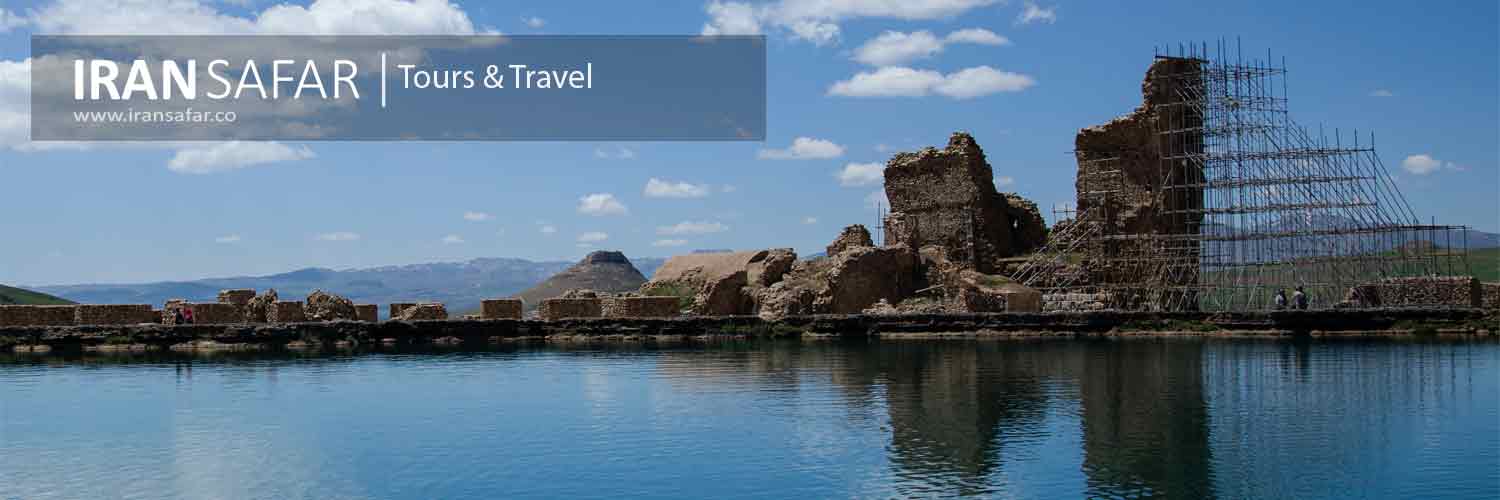 Iran’s top ten places to visit, Takht-e Soleyman
Iran’s top ten places to visit, Takht-e Soleyman
The main parts of the sanctuary are distinguished by cut blocks of stone and well-baked bricks. The exterior mud brick wall was coated by a rough-stone wall with a facing of large stone slabs, imitating stretching and heading bond. The northern stone gate, built exactly on the place of the older one and badly damaged now, was obviously identical with the well-preserved southern gate with its gallery of blind windows above and its lateral semicircular bastions, The lower part of the gate is covered with debris, only the upper part, that is less than half of the gate height, being visible today. The wall had an uncovered passage with parapet and stepped crenellations, tower chambers above the massive bastions, and connecting vertical shafts down to the gate-house, probably for interlunation. The inner brick wall was replaced by a stone wall with interior vaulted corridor and semicircular bastions outside.
Near the main site you can also visit the geological structure Zendan-e Soleyman or Solomon’s Prison which is a hollow, conical mountain rising about 100 m above the surrounding land, and contains an 80 m deep hole, about 65 m in diameter, formerly filled with water.
Read – Full Guide Takht-e Soleyman



Comment (0)